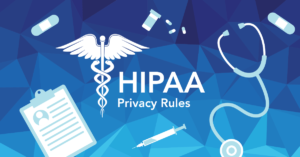
Introduction on Risk Management for Patient Portals
First let us start by understanding what is the Definition of Patient Portals
Patient portals, as integral components of modern healthcare, provide a digital gateway for seamless communication and information exchange between patients and healthcare providers. Understanding the significance of risk management in this context is paramount.
Understanding the Landscape
Overview of Patient Portal Systems
Delving into the intricacies of patient portals, this section explores their role as vital nodes in modern healthcare technology. Current trends shaping healthcare technology are examined, emphasizing the pivotal position patient portals hold in the evolving healthcare landscape.
Identifying Potential Risks
Cybersecurity Threats
Unravelling the layers of potential risks, this section dissects cybersecurity threats such as malware attacks and phishing attempts. We explore the pros and cons of various risk identification strategies, emphasizing the importance of proactive measures.
Compliance and Regulatory Framework
HIPAA Compliance
Navigating the complex regulatory environment, this section explores the implications of compliance with standards such as HIPAA and GDPR. A detailed examination of the legal consequences that may arise from non-compliance is provided.
Risk Assessment
Conducting a Comprehensive Risk Analysis
Effective risk management begins with a comprehensive risk analysis. This section outlines methodologies like vulnerability scanning and penetration testing. We weigh the pros and cons of these strategies, shedding light on the critical process of risk identification and prioritization.
Implementing Robust Authentication
Multi-Factor Authentication
Authentication serves as the frontline defence against unauthorized access in risk management for patient portals. This section discusses multi-factor authentication, exploring its benefits and drawbacks, along with other authentication strategies such as biometric verification and role-based access control.
Data Encryption Strategies
End-to-End Encryption
In the digital exchange of health information, data encryption is imperative. This section explores the pros and cons of end-to-end encryption, TLS, and SSL as strategies to secure data transmission within patient portals.
User Education and Training
Promoting Cybersecurity Awareness
Empowering users with cybersecurity awareness is paramount. This section discusses the significance of educating both staff and patients on safe practices within patient portals, including the pros and cons of various training approaches.
Continuous Monitoring and Surveillance
Real-Time Monitoring Systems
To identify and mitigate security threats promptly, real-time monitoring systems and intrusion detection and prevention mechanisms play pivotal roles in risk management for patient portals. We explore the pros and cons of continuous surveillance in maintaining the integrity of patient portals.
Incident Response Planning
Developing an Incident Response Team
In the event of a security incident, a well-structured response plan is crucial. This section delves into the pros and cons of establishing incident response teams and protocols for timely and effective responses.
Regular System Audits
Conducting Routine Audits
Routine audits are essential in identifying vulnerabilities and weaknesses. This section emphasizes the pros and cons of regular system audits for maintaining the robustness of patient portal security.
Vendor Risk Management
Assessing and Monitoring Third-Party Risks
Patient portals often rely on third-party vendors. This section explores strategies for assessing and monitoring vendor risks, weighing the pros and cons of various approaches and emphasizing the importance of secure relationships with external entities.
Also, read on How Cerner & Validic are Transforming Patient Portals
Collaboration with IT and Security Experts
Engaging with Cybersecurity Professionals
Collaborating with cybersecurity professionals and providing continuous training for IT teams are crucial for staying ahead of evolving threats. This section explores the pros and cons of such collaboration, highlighting the need for ongoing education.

Integration of Artificial Intelligence (AI)
Utilizing AI for Threat Detection when working on risk management for patient portals
In the realm of patient portal security, the integration of AI can enhance threat detection and predictive analytics. We explore the pros and cons of incorporating AI to bolster security measures.
Updating and Patching Protocols
Importance of Timely Software Updates
Timely software updates and patch management are critical in addressing vulnerabilities. This section underscores the pros and cons of keeping systems up-to-date to mitigate potential risks.
Data Backup and Recovery Strategies
Implementing Effective Backup Systems
In the face of data loss or system failures, effective backup and recovery strategies are essential. We explore the pros and cons of implementing robust backup systems and comprehensive recovery plans.
Regulatory Reporting
Navigating Compliance Reporting Requirements
In the event of security incidents, navigating compliance reporting requirements is crucial. This section delves into the pros and cons of transparency in reporting incidents to relevant authorities.
Communication Strategies during Security Incidents
Crafting Clear and Transparent Communications
Effective communication is key when addressing security incidents. This section explores the nuances of crafting clear and transparent communications to build and maintain trust, along with the pros and cons of different communication strategies.
Future Trends in Patient Portal Security
Blockchain Integration
Looking ahead, this section explores emerging trends such as blockchain integration and advanced biometric technologies that could shape the future of patient portal security.
Conclusion
Recap of Key Risk Management for Patient Portals Strategies
A recap of key risk management strategies is provided in wrapping up this comprehensive guide. The article concludes by acknowledging the ongoing evolution of patient portal security and the continuous efforts needed to adapt to emerging threats in the dynamic healthcare technology landscape.
Pros and Cons of Risk Management Strategies
Pros
- Enhanced cybersecurity posture
- Protection of sensitive patient data
- Compliance with regulatory standards
- Increased trust among stakeholders
Cons
- Implementation costs
- Potential user resistance to new security measures
- Ongoing need for updates and training
Frequently Asked Questions (FAQ)
Q1: What are the common cybersecurity threats to patient portals?
A1: Common threats include malware attacks, phishing attempts, and unauthorized access. These threats can compromise the security of patient data.
Q2: How can patient portals ensure compliance with regulations like HIPAA?
A2: Patient portals can implement robust authentication, encryption strategies, and conduct regular audits to ensure compliance. Engaging with legal experts for guidance is also advisable.
Q3: What role does user education play in patient portal security?
A3: User education is crucial for promoting cybersecurity awareness among both staff and patients. It helps in preventing common security pitfalls and ensures a more secure usage environment.
Q4: How can AI be integrated into patient portal security?
A4: AI can be utilized for threat detection and predictive analytics, enhancing the overall security posture of patient portals by identifying and mitigating potential risks proactively.
Q5: What are the future trends in patient portal security?
A5: Emerging trends include blockchain integration for enhanced data integrity and advanced biometric technologies for secure user authentication.
Q6: How often should patient portals conduct risk assessments?
A6: Regular risk assessments, including vulnerability scanning and penetration testing, should be conducted at least annually, or more frequently if there are significant changes to the system or potential threats.
Q7: Why is continuous monitoring important for patient portal security?
A7: Continuous monitoring allows for real-time detection of security threats, enabling prompt responses to mitigate risks and protect sensitive health data.
Q8: What steps can patient portals take to address vendor risks?
A8: Patient portals can assess and monitor third-party risks, establish secure relationships with vendors, and ensure that vendors comply with security standards and protocols. Regular reviews of vendor agreements are essential.
Q9: How should patient portals communicate during a security incident?
A9: Clear and transparent communication is essential. Patient portals should promptly inform stakeholders about the incident, the steps being taken to address it, and any potential impact on data security.
Q10: What are the key components of an effective incident response plan when analyzing risk management for patient portals?
A10: An effective incident response plan includes the establishment of incident response teams
Videos:

